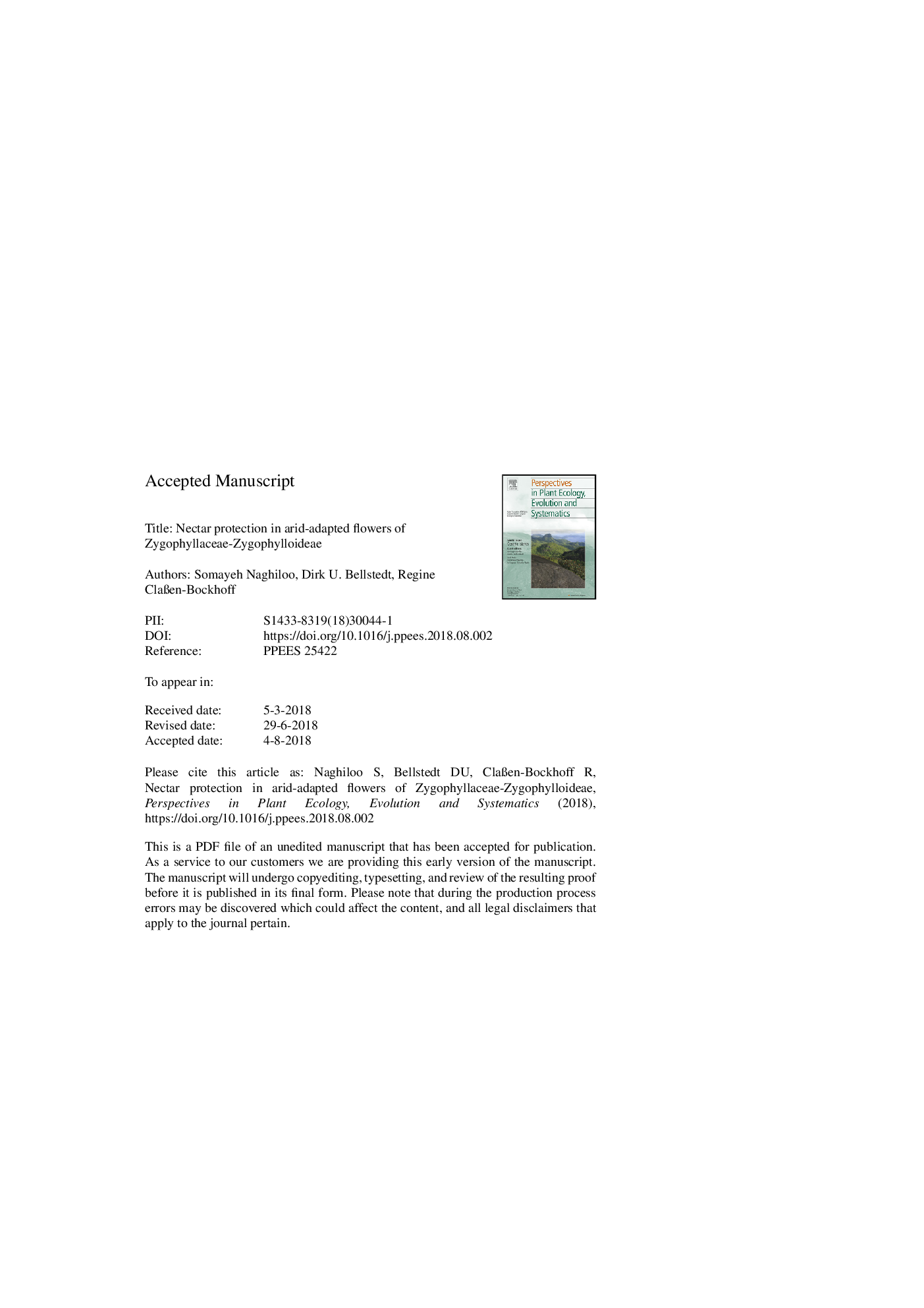| Article ID | Journal | Published Year | Pages | File Type |
|---|---|---|---|---|
| 8849473 | Perspectives in Plant Ecology, Evolution and Systematics | 2018 | 37 Pages |
Abstract
The survival of plants in arid areas depends on efficient adaptation to extreme environments. The protection against nectar loss is an important challenge for flowers in arid environments. Flowers of arid-adapted Zygophyllaceae subfamily Zygophylloideae are characterized by a peculiar structure called staminal scales (SS). The special arrangement of SS around the perigynous disc nectary (DN) suggests their adaptive function for protection against nectar loss. We aim to test the protective function of SS and to understand the synorganised evolution of SS and DN in relation to nectar protection. We, first, manipulate flowers by removal of SS in two representatives of Zygophylloideae. The results indicate a dramatic decrease of nectar volume confirming the protective function of SS. Then, we study the functional synorganisation of SS and DN during development and trace their evolution on a phylogenetic tree. The evolution of SS is closely related to the change in the organization of the DN. Such a synorganised evolution presents an important adaptive advantage promoting the diversification of the subfamily in arid and semiarid areas. Augea represents a unique case in which the protective function of SS is taken over by a hypanthium and the SS have acquired a secondary mechanical role for promotion of autogamy.
Related Topics
Life Sciences
Agricultural and Biological Sciences
Ecology, Evolution, Behavior and Systematics
Authors
Somayeh Naghiloo, Dirk U. Bellstedt, Regine ClaÃen-Bockhoff,
